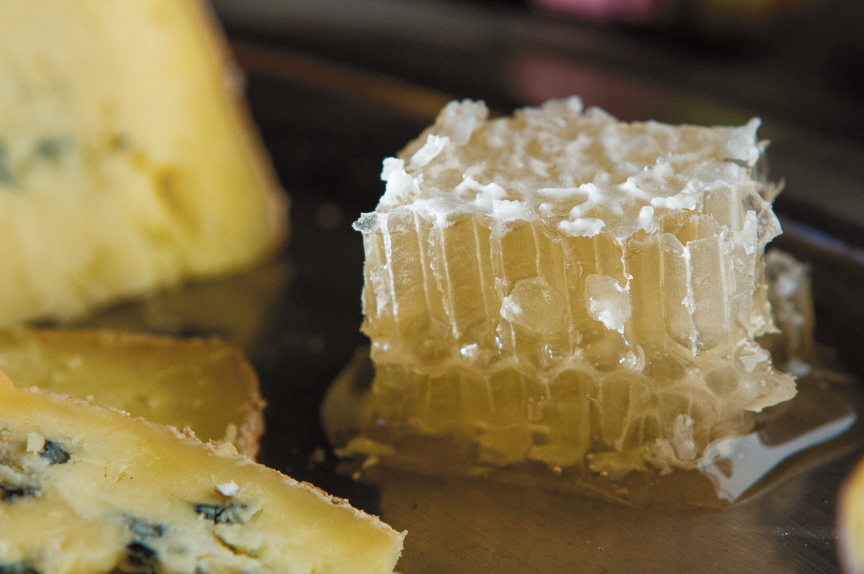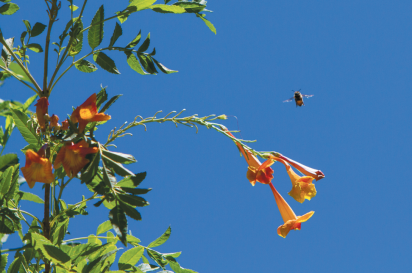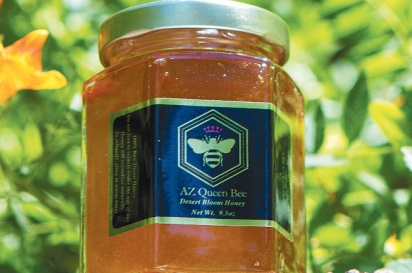AZ Queen Bee: Local Honey Gives a Taste of Place
When we think about a “taste of place,” there are few foods that exemplify the flavor of a region better than honey. Not only is this delicious, natural sweetener a decadent addition to our pantries, but supporting local beekeepers is essential for our flourishing food supply.
One local bee champion, Emily Brown, has been advocating the sweet stuff for nearly two decades, starting with her professional bee advocacy as a teenager during her reign as American Honey Queen. As Honey Queen she traveled the country as an ambassador of bee awareness, education and appreciation.
Today, through her company AZ Queen Bee (azqueenbee.com), she removes problem bees and relocates them if possible. She also educates about bees and serves as the official beekeeper of Butterfly Wonderland in Scottsdale. Her sweet pursuits don’t stop there. She also is a micro-producer of fresh local honey, fresh honeycomb and bee pollen.
“Our nectar flow starts in March with the citrus,” she says. “Bees start swarming as that nectar starts flowing. Then we move into the mesquite and palo verde flow and all the wildflowers in between. We have such a huge array of wildflower sources here and it’s wonderful for the bees. They get such a diverse diet.”
Honey is a very seasonal product. Spring honey flow shows a light golden hue and lighter flavor. Fall honey has a deeper amber color and more robust flavor. More than 300 types of honey are produced in the U.S. but desert honey stands out.
“Honey must have less than 18% moisture content, but desert honey is often down at about 14%, so it’s super thick and concentrated,” notes Brown. “In AZ, we are very fortunate because our nectar and floral sources are so different than other states. We have super unique honey that can’t be replicated anywhere else. There’s a definite terroir to this honey.”
Each bee produces just a drop of honey—1/12 of a teaspoon!— in its 4- to 6-week lifespan. So that jar of honey is the life’s work of hundreds of bees.
Bees are essential for our local farms and food production: 80% of our fruits and vegetables are insect pollinated. In Arizona, more than $1.2 billion in agriculture crops require honeybee pollination.
With recent precipitous declines in bee populations—some beekeepers lost more than 30% of their hives last year—what can we do to support our local bee populations?
Use fewer pesticides and chemicals in your own garden and buy fruits, vegetables and plants that don’t have systemic pesticides, which can poison bees
Plant more nectar-producing plants. This gives the bees more foraging plants when they need it.
Eat more honey. This means more bee education, more hives, more pollination for farms and urban gardens.
Support local beekeepers by buying local honey. Bees forage three to five miles so having local hives helps everyone. Look for AZ Queen Bee products online, at Butterfly World and at Benedict’s Café.






